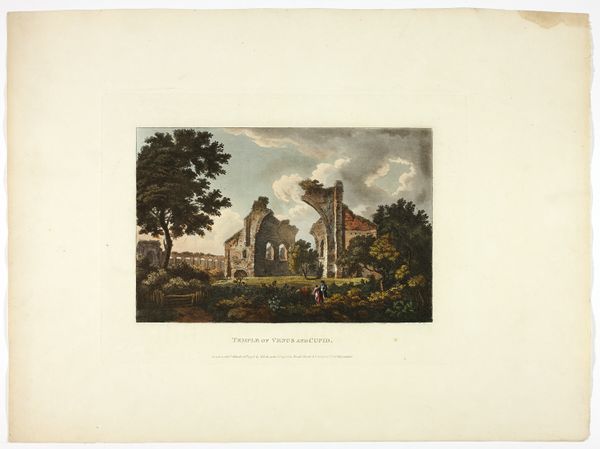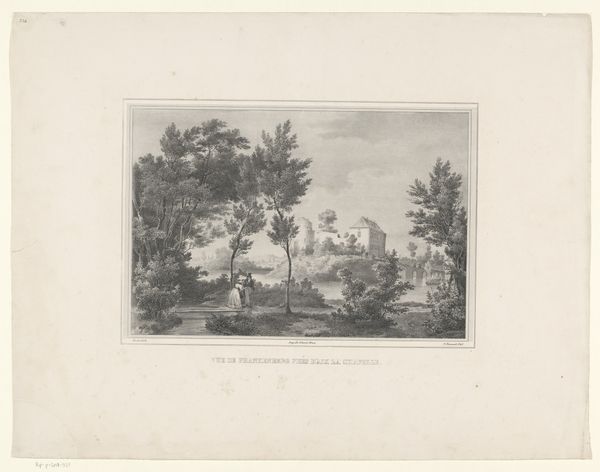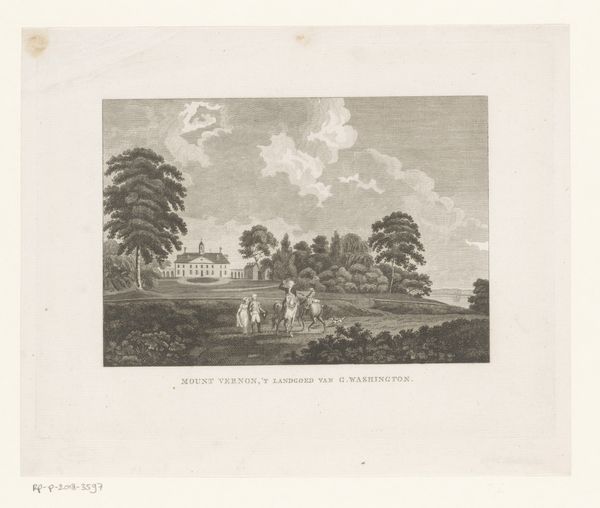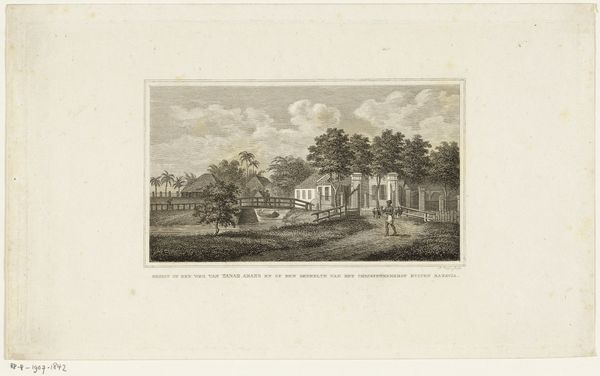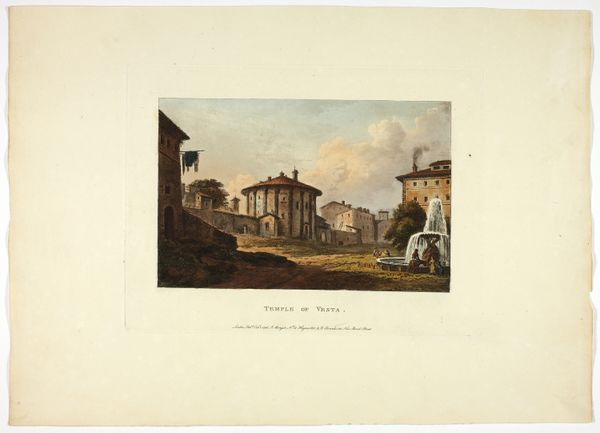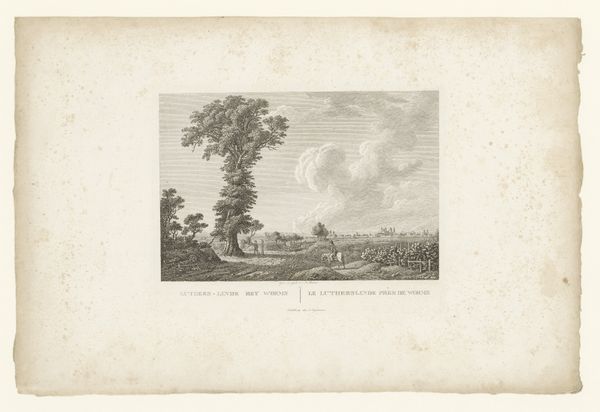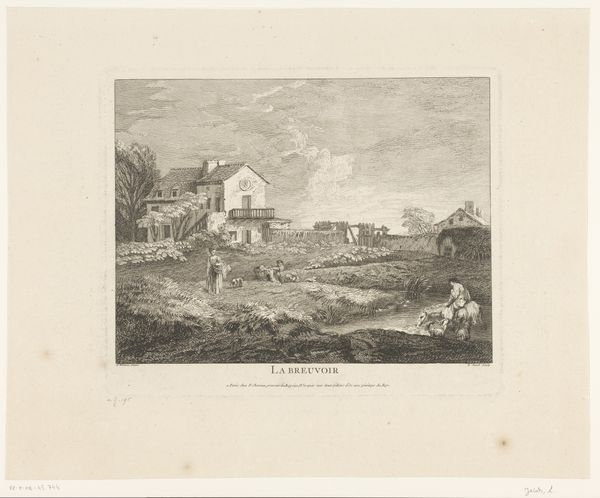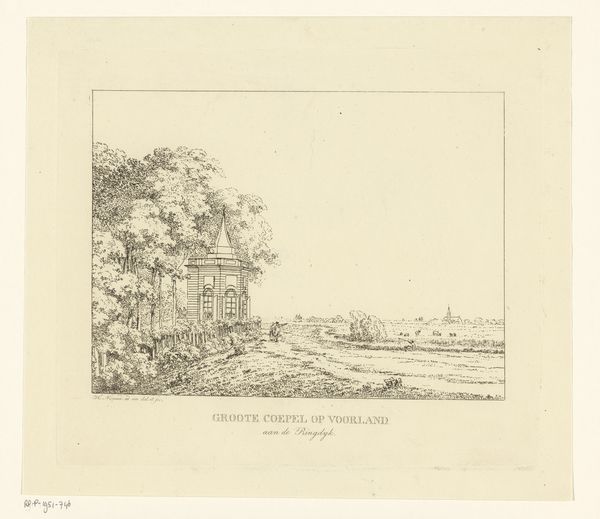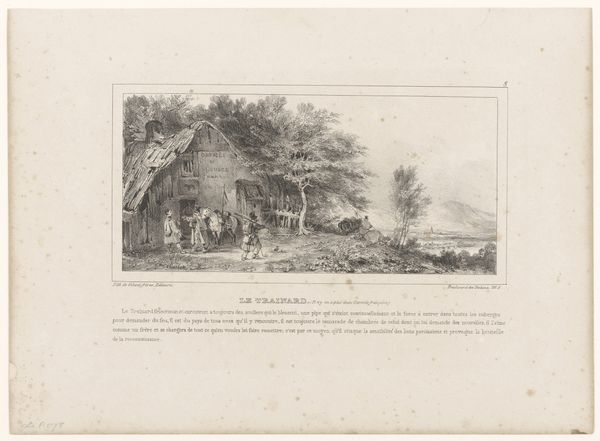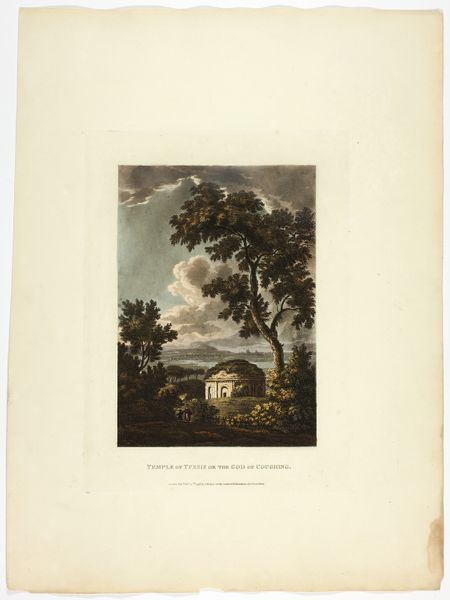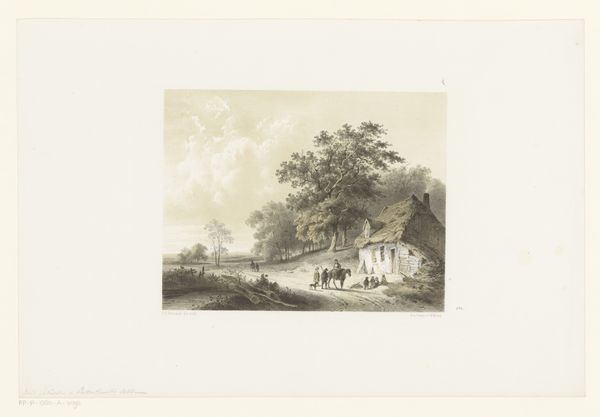
Temple of Hercules at Cori, plate thirty-two from the Ruins of Rome Possibly 1798
0:00
0:00
drawing, painting, print, etching, paper, watercolor
#
drawing
#
neoclacissism
#
painting
# print
#
etching
#
landscape
#
classical-realism
#
paper
#
watercolor
#
coloured pencil
#
history-painting
Dimensions: 330 × 448 mm (sheet)
Copyright: Public Domain
M. Dubourg made this print of the Temple of Hercules at Cori, as part of his series, Ruins of Rome, during the early nineteenth century. This aquatint embodies the early 1800s fascination with classical antiquity, a phenomenon deeply intertwined with the cultural and political landscape of Europe at the time. The print captures the Temple of Hercules amidst its gradual decay, a visual metaphor for the decline of empires, which resonated in an era marked by revolution and shifting power dynamics. This interest was fueled by archaeological discoveries, and sustained by institutions such as museums and academies that collected and studied classical artifacts, shaping artistic tastes and historical narratives. The image blends romantic sensibility with neoclassicism, evident in the picturesque rendering of the ruin set against an idealized landscape. Understanding this work involves delving into period travelogues, architectural studies, and the history of archeological expeditions, all essential for grasping the dialogue between the past and the present that this print so eloquently embodies.
Comments
No comments
Be the first to comment and join the conversation on the ultimate creative platform.


